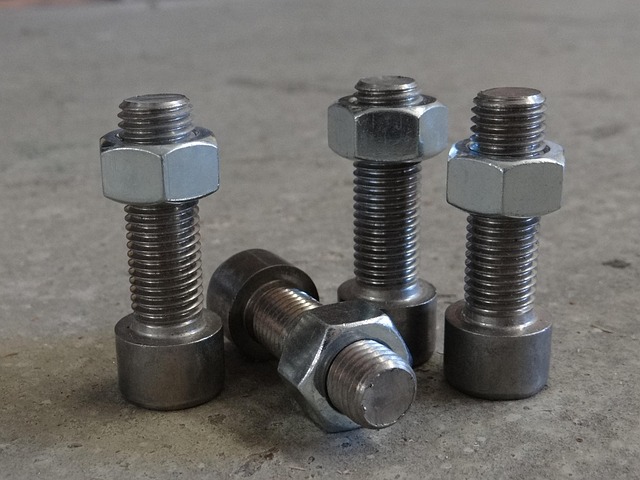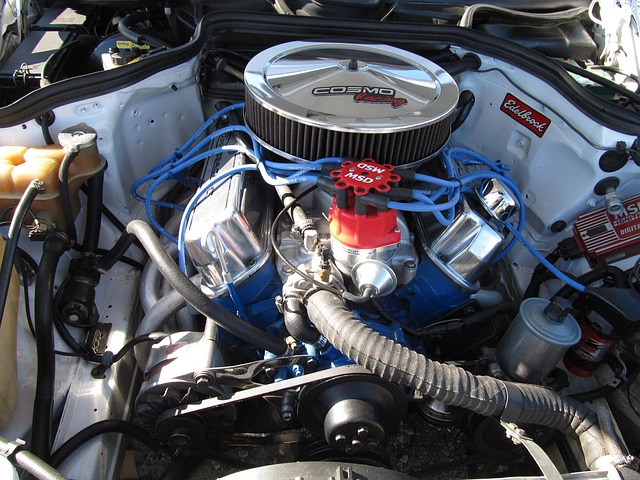Mercedes Carbon Fiber Trim Repair: Safety Guide and Best Practices
Mercedes carbon fiber trim, renowned for its lightweight strength and aesthetics, requires specializ…….
In the realm of luxury automotive craftsmanship, Mercedes-Benz has long been synonymous with excellence. The brand’s commitment to innovation extends beyond its cutting-edge engines and performance technology; it also permeates the intricate details that define the interior experience. One such remarkable advancement is the integration and repair of carbon fiber trim, a material choice that not only enhances aesthetics but also presents a unique set of considerations for maintenance and upkeep. This comprehensive article delves into the world of Mercedes carbon fiber trim repair, exploring its history, global impact, technological innovations, and the challenges it faces. By understanding this specialized field, car enthusiasts, professionals, and prospective investors can gain valuable insights into the future of automotive interior design and repair.
Definition and Composition:
Mercedes carbon fiber trim repair refers to the process of restoring or replacing interior components in Mercedes vehicles that are crafted from carbon fiber. Carbon fiber is a lightweight, strong composite material consisting of thin strands of carbon fibers bound together with resins. In automotive applications, it is valued for its exceptional rigidity, durability, and ability to reduce vehicle weight, contributing to improved fuel efficiency.
Historical Context:
The use of carbon fiber in automobiles gained momentum in the late 20th century as manufacturers sought ways to enhance performance while reducing overall vehicle mass. Mercedes-Benz was an early adopter, incorporating carbon fiber components into various models, including the iconic SLR McLaren and subsequent sports car generations. Over time, as manufacturing techniques advanced, the use of carbon fiber expanded beyond exterior body panels to interior trim elements, offering designers greater freedom in creating unique and lightweight interiors.
Significance:
Mercedes carbon fiber trim repair is a specialized service that caters to the demanding needs of luxury car owners. The intricate nature of carbon fiber trim, with its complex layering and resin infusions, requires precise skill and knowledge for successful repair or restoration. This process ensures that the integrity and structural strength of the interior components are maintained, preserving the vehicle’s overall value and performance. Moreover, as Mercedes continues to embrace carbon fiber in new model lines, proper repair techniques become increasingly vital for both original equipment manufacturers (OEMs) and aftermarket service providers.
The global impact of Mercedes carbon fiber trim repair is substantial, driven by several key factors:
Luxury Car Market Growth: The luxury automotive sector has experienced significant expansion worldwide, with a growing demand for high-end vehicles featuring premium interior appointments. Carbon fiber trim, known for its exclusivity and lightweight properties, has become a desirable feature among luxury car buyers.
Regional Preferences: Different regions have varying preferences when it comes to vehicle interiors. For instance, markets like North America and Western Europe have shown a higher acceptance of carbon fiber trim in high-end vehicles, while Asia-Pacific countries are witnessing a rise in demand as luxury car ownership increases.
Manufacturing Trends: Global automotive manufacturers are increasingly adopting carbon fiber for its lightweight benefits, especially in electric and hybrid vehicles. This trend drives the need for efficient repair methods to ensure sustainability and cost-effectiveness without compromising quality.
Aftermarket Services: The popularity of aftermarket modifications and personalization has led to a rise in demand for carbon fiber trim repairs and custom installations. Enthusiasts often seek to enhance their vehicles’ interiors with unique, lightweight carbon fiber accents.
Market Dynamics:
The global market for automotive interior components, including carbon fiber trim repair services, is experiencing steady growth. This growth is fueled by the increasing adoption of advanced materials in vehicle manufacturing and the rising demand for customized, high-end interiors. According to a recent report by Market Research Future (MRFR), the global automotive interior market valued at USD 143.2 billion in 2020 and is projected to reach USD 227.6 billion by 2027, growing at a CAGR of 6.5% during the forecast period.
Investment Patterns:
Mercedes-Benz and other luxury automotive brands heavily invest in research and development to perfect carbon fiber manufacturing processes and repair techniques. These investments ensure that their vehicles remain at the forefront of technology while maintaining high quality standards. Aftermarket service providers also allocate resources to acquiring specialized tools, training technicians, and sourcing premium carbon fiber materials to offer competitive services.
Economic Impact:
The economic impact of Mercedes carbon fiber trim repair extends beyond the automotive industry. It contributes to job creation in manufacturing, engineering, and skilled labor sectors. Moreover, the demand for high-quality repair services stimulates the growth of specialized aftermarket businesses, fostering competition and innovation.
Material Innovations:
The field of carbon fiber technology has witnessed significant advancements, driving the evolution of Mercedes carbon fiber trim repair:
Advanced Fiber Weaving: New weaving techniques enable the production of carbon fiber fabrics with improved strength-to-weight ratios, making them more suitable for intricate interior components.
Resin Systems: Developments in resin infusion processes have led to more efficient and consistent bonding, ensuring stronger bonds between fibers and resins.
3D Printing: Additive manufacturing techniques allow for the creation of complex carbon fiber structures with minimal waste, opening up possibilities for personalized interior components.
Reparation Technologies:
Technological advancements in repair methods have revolutionized Mercedes carbon fiber trim restoration:
Laser Repair: Laser technology offers precise cutting and welding capabilities, allowing technicians to repair or replace damaged carbon fiber sections with minimal material wastage.
Automated Repurposing: Advanced machinery can repurpose surplus carbon fiber materials, reducing costs and environmental impact while ensuring quality repairs.
Digital Modeling: 3D scanning and modeling technologies enable accurate measurement and digital replicas of interior components, facilitating precise repairs or custom designs.
The regulatory landscape surrounding Mercedes carbon fiber trim repair is multifaceted, influenced by safety, environmental, and trade-related considerations:
Safety Standards: Automotive interior components, including carbon fiber trim, must adhere to stringent safety regulations, ensuring minimal risk to occupants in the event of a collision. Testing and certification processes verify the structural integrity and flammability characteristics of these materials.
Environmental Policies: The automotive industry is subject to environmental regulations that promote sustainable manufacturing practices. Proper disposal and recycling of carbon fiber waste are essential considerations for repair facilities to minimize their ecological footprint.
Trade Regulations: Carbon fiber materials, being specialized and high-value components, are often subject to trade agreements and tariffs, impacting their availability and pricing. Aftermarket service providers must navigate these regulations to offer competitive services.
Despite its numerous advantages, Mercedes carbon fiber trim repair faces several challenges:
Skill Shortage: The specialized nature of carbon fiber repair requires highly skilled technicians with extensive training in composite material repair. Finding and retaining such professionals can be challenging for service providers.
Material Cost: Carbon fiber materials are relatively expensive compared to traditional interior trims, making cost-effective repairs a concern for both OEMs and aftermarket shops.
Complexity of Repairs: Intricate carbon fiber trim designs can make repairs more complex, especially when dealing with custom or one-off components. Ensuring a perfect match in terms of aesthetics and structural integrity is a significant challenge.
Proposed Solutions:
Training Programs: Establishing comprehensive training programs and certifications for technicians can help address the skill shortage. Industry partnerships with educational institutions can develop specialized courses, ensuring a steady pipeline of qualified professionals.
Material Cost Optimization: Research and development efforts to create more cost-effective carbon fiber variants while maintaining performance characteristics can make repairs more accessible.
Digitalization and Automation: Adopting digital technologies for design, modeling, and repair processes can enhance precision and streamline the repair workflow, reducing labor costs.
A premium automobile restoration shop in Germany successfully restored the carbon fiber trim on a classic Mercedes-Benz S-Class (W220 model). The project involved repairing several damaged components, including the door panel inserts and center console. By utilizing advanced laser cutting to remove damaged material and precise resin infusions for repairs, the shop achieved a factory-like finish. This case study highlights the precision and expertise required in Mercedes carbon fiber trim repair, demonstrating the ability to restore vintage vehicles to their original splendor.
An aftermarket modification company in the United States offered a unique service for Mercedes-Benz owners seeking personalized interiors. They specialized in creating custom carbon fiber accents and dashboards for various model lines. Through 3D scanning and printing, they could reproduce complex interior components with intricate designs. This case study illustrates the potential for customization and personalization in the aftermarket, catering to car enthusiasts’ desire for unique vehicle interiors.
The future of Mercedes carbon fiber trim repair is filled with promising opportunities and emerging trends:
Sustainable Practices: The industry will continue to focus on sustainable manufacturing and repair methods, aiming to minimize environmental impact without compromising quality. Recycled carbon fiber materials and closed-loop recycling processes may become more prevalent.
Advanced Materials: New carbon fiber variants with enhanced properties, such as improved flexibility and heat resistance, could enter the market, expanding the possibilities for interior design.
Digitalization and Remote Services: The integration of digital technologies will enable remote consultations, virtual design services, and online ordering for repair components, enhancing accessibility and convenience for customers worldwide.
Global Market Expansion: Emerging markets in Asia and South America are expected to witness significant growth in luxury car ownership, driving the demand for carbon fiber trim repairs and fostering opportunities for international service providers.
Mercedes carbon fiber trim repair is a dynamic field that has evolved alongside advancements in automotive technology and design. As Mercedes-Benz continues to push boundaries in interior craftsmanship, the importance of specialized repair techniques becomes increasingly vital. This article has explored various aspects, from historical context and global trends to technological innovations and challenges. By understanding these nuances, readers can appreciate the intricate work involved in preserving and enhancing the iconic interiors associated with the Mercedes brand. As the industry evolves, continuous innovation, sustainable practices, and a skilled workforce will be key drivers in shaping the future of Mercedes carbon fiber trim repair.
Q: How does carbon fiber differ from traditional interior materials?
A: Carbon fiber is a lightweight composite material made from thin strands of carbon fibers bound together with resins. Unlike traditional materials like wood or plastic, carbon fiber offers exceptional strength-to-weight ratio, rigidity, and durability, making it ideal for high-performance vehicles.
Q: Can carbon fiber trim be repaired or only replaced?
A: Carbon fiber trim can indeed be repaired in many cases, especially if damage is localized. Repairs may involve cutting out damaged sections and replacing them with new carbon fiber material, followed by precise bonding with resins to ensure structural integrity.
Q: What are the common challenges faced during carbon fiber repair?
A: Common challenges include matching the original material’s color and texture, ensuring proper structural bonding, and dealing with intricate designs that require precision cutting and molding. Skilled technicians use advanced technologies and techniques to overcome these hurdles.
Q: Are there any environmental concerns associated with carbon fiber?
A: While carbon fiber offers numerous benefits, there are environmental considerations. The manufacturing process can generate waste, and the material is not biodegradable. However, industry efforts are focused on developing sustainable practices, including recycling and using more environmentally friendly resins.
Q: Can aftermarket modifications affect the vehicle’s warranty?
A: Aftermarket modifications, including carbon fiber trim repairs or installations, should be performed by authorized service centers to ensure compliance with warranty terms. Unapproved alterations might void warranties, so it’s essential to consult the manufacturer’s guidelines.

Mercedes carbon fiber trim, renowned for its lightweight strength and aesthetics, requires specializ…….

Mercedes carbon fiber trim, a popular luxury feature, is susceptible to damage like scratches and de…….

Evaluating and repairing Mercedes carbon fiber trim requires a combination of visual inspection and…….

Repairing Mercedes carbon fiber trim requires understanding the differences between matte and gloss…….

Mercedes carbon fiber trim, renowned for its sleek design in high-end models, demands specialized ca…….

Mercedes carbon fiber trim, a luxurious vehicle feature, requires specialized care due to its vulner…….

Mercedes carbon fiber trim transforms vehicles with its advanced composite materials, enhancing perf…….